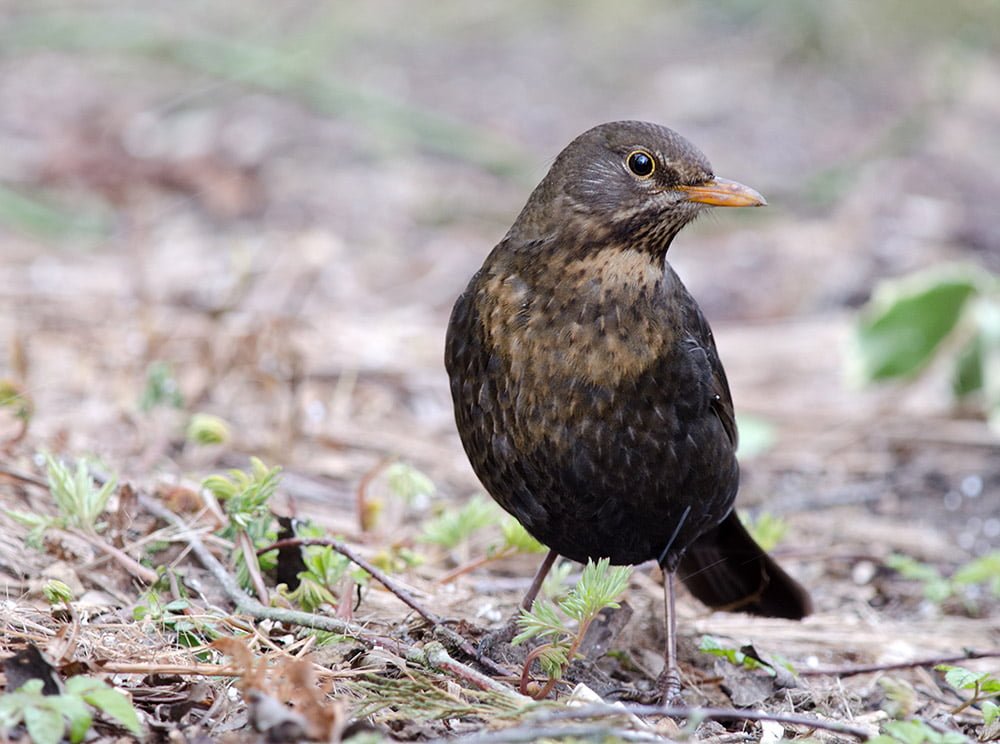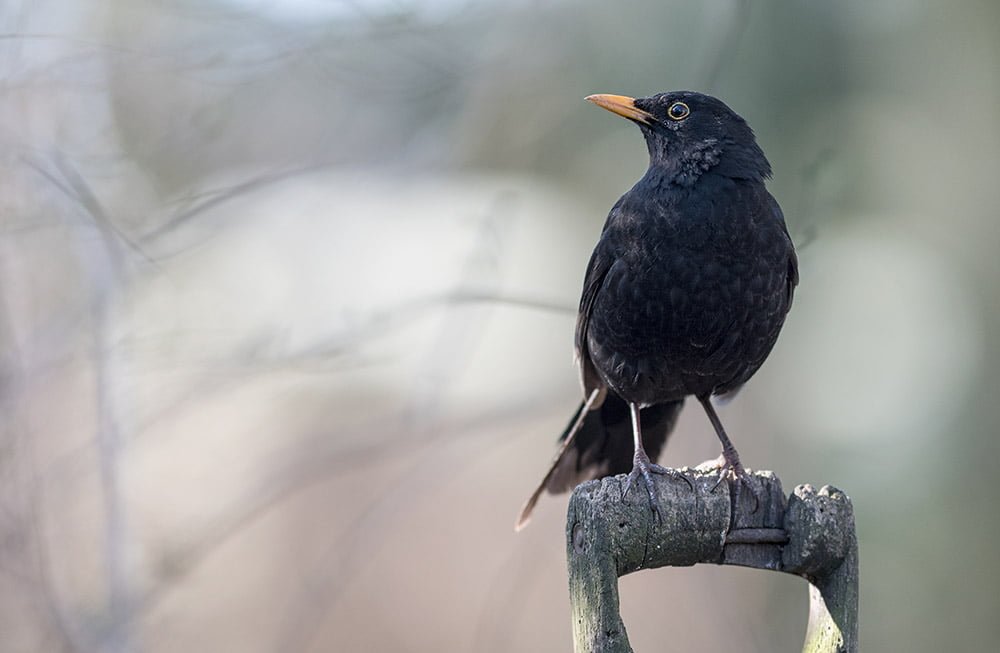Overview
The blackbird is originally a woodland species. They breed in woodland, scrub, gardens and parks. They are common in towns, villages and city centres in the UK. The blackbird is not a flocking bird and so is usually seen singly or in pairs. Male blackbirds become very territorial in Spring and can often be seen and heard chasing off other males who trespass on their patch. Blackbirds are generalist feeders and eat both meat and ‘fruit & veg’. Earthworms form a large part of their diet, topped off with a few snails, caterpillars, insects and berries. The blackbird is resident in the whole of the UK all year, with many birds migrating here from Europe in autumn to spend winter with us.
Description
A member of the thrush family, the charming perky blackbird has to be one of our most familiar birds, if not the bird almost everyone is able to recognise without too much trouble. Male and female blackbirds differ in appearance. Males sport an all black outfit which lives up to the bird’s name, though sometimes this black is tinged dark brown in places. He has a striking, contrasting strong orange-yellow bill which becomes brighter during the breeding season, and a yellow eye ring. Female blackbirds are not black however, just to be awkward! They are generally brownish all over, with variably mottled or diffuse spotting or streaked markings on breast and brownish or greyish-white throat. Some female blackbirds have quite a lot of pale brown or grey in their plumage, while others can be quite dark – but never as dark as males. Both sexes have dark grey-brown legs. The sexes do not differ in size, both being chunky robust and plump birds typical of many other thrush species.

Call & Song: The blackbird is a rather noisy bird! Amongst many different calls the most familiar and loudest is the alarm call, produced at the sight of a local moggy or other danger… a high-pitched rapid metallic rattle often produced as the bird takes off. It would easily deafen any predator unwise enough to bother it! The song is beautiful and a key part of the Spring dawn chorus. It is melodic and musical with many variations of warm mellow notes sung at a relaxed undulating pace… a very pleasant and welcome sign of the start of Spring.
Latin name: Turdus merula
Size: 23 ½ – 29 cm
In The Garden
The Blackbird is a common garden bird and will often be seen foraging for worms on your lawn. They are very adaptable feeders and will eat a range of food scraps and leftovers, old or windfall apples are a favourite… especially in the colder winter months, and they simply can’t resist raisins and sultanas if you fancy giving them a real treat, they’ll love you forever! Blackbirds also eat ripe berries, so planting shrubs such as Pyracantha and Cotoneaster should attract them and help them to survive through the winter, whilst they also love the berries of rowan, holly, elder, hawthorn and honeysuckle. Another favourite is Ivy (Hedera helix) berries, so by not clearing ivy but allowing some to mature to flower and fruit you will doing your blackbirds a huge favour. They may also nest within thick ivy, whilst in Autumn ivy flowers are a rich source of nectar attracting countless bees and insects. Blackbirds are expert at foraging through leaf litter and flower beds for prey.

Did You Know?
The flesh of one of the Blackbird’s favoured natural foods the ivy berry contains almost as many calories as a Mars bar… no wonder they are an important source of energy in winter!


